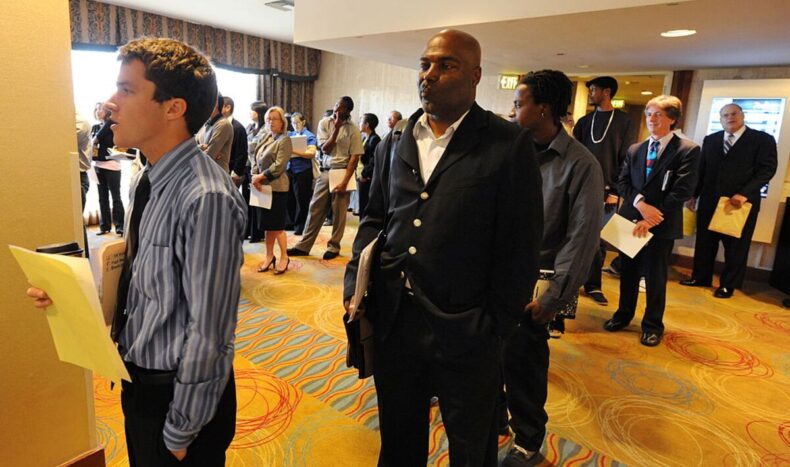The labor market in the United States is gradually cooling off, but remains robust, with a high number of job openings despite a rebalancing that may help contain inflation, as the Federal Reserve aims to slow hiring by raising interest rates.
Table of Contents

The labor market in the United States is gradually cooling off, as the latest government data shows the number of available job openings dropped to 9.9 million in February, down from 10.6 million on the last day of January. Despite the number of unemployed workers, there are still more job vacancies available.
The decline in open positions reflects a rebalancing in the labor market, which is encouraging for policymakers, as a tight job market contributes to inflation. The Federal Reserve has been closely monitoring the ratio of job vacancies to jobless individuals as it strives to curb inflation and limit employment growth. In spite of climbing borrowing costs, the number of available openings remains high. The Fed has raised interest rates to 5 percent, from near zero, over the past year to make it costlier for companies to expand and consumers to spend.

While the labor market has cooled off somewhat, it is still robust, as economists surveyed by Bloomberg expect the March employment report to show that employers added about 240,000 jobs. Despite the decline in job openings, some industries such as healthcare, technology, and finance continue to experience strong demand for workers. This suggests that the US economy is continuing to recover from the pandemic-induced recession, albeit at a slightly slower pace than in previous months.
US labor market dynamics still favorable to workers
Although there have been significant job cuts in the technology industry, the overall rate of layoffs has remained historically low. This may indicate that employers are reluctant to part with workers hired during pandemic-era spikes. The number of workers quitting their jobs voluntarily, a sign of confidence that they can find work elsewhere, rose slightly in February to four million. JOLTS, regarded as a lagging indicator, provides insight into past conditions rather than indicating what may happen in the future. Therefore, while the labor market is showing signs of cooling off, the dynamics still look pretty favorable to workers, according to Julia Pollak, the chief economist at ZipRecruiter.

Fed’s interest rate hiking cycle
The Fed has been raising interest rates to prevent widespread layoffs or causing lasting damage to the labor market. The aim is to contain inflation and prevent employers from feeling pressure to raise wages to compete for workers and then pass along price increases to consumers. While the Personal Consumption Expenditures index, which is one measure of inflation that the Fed watches closely, showed that price gains slowed substantially in February to 5 percent on an annual basis, the Fed will remain cautious. If the job market continues to cool off, the Fed may pause its interest rate hiking cycle.
The US labor market is showing signs of a gradual slowdown as the number of job openings decreases. This could mean that workers will have a more balanced environment in which to search for employment. Even though the ratio of job openings to unemployed workers has gone down, it still remains in favor of workers. Despite the technology industry experiencing significant job reductions, the overall number of layoffs has been historically low. Despite this, the Fed is still exercising caution in its efforts to contain inflation and prevent employers from raising wages, which could lead to increased prices for consumers.













